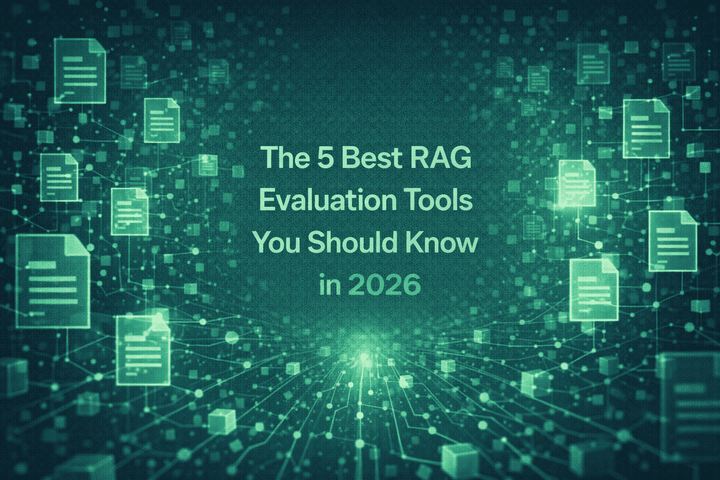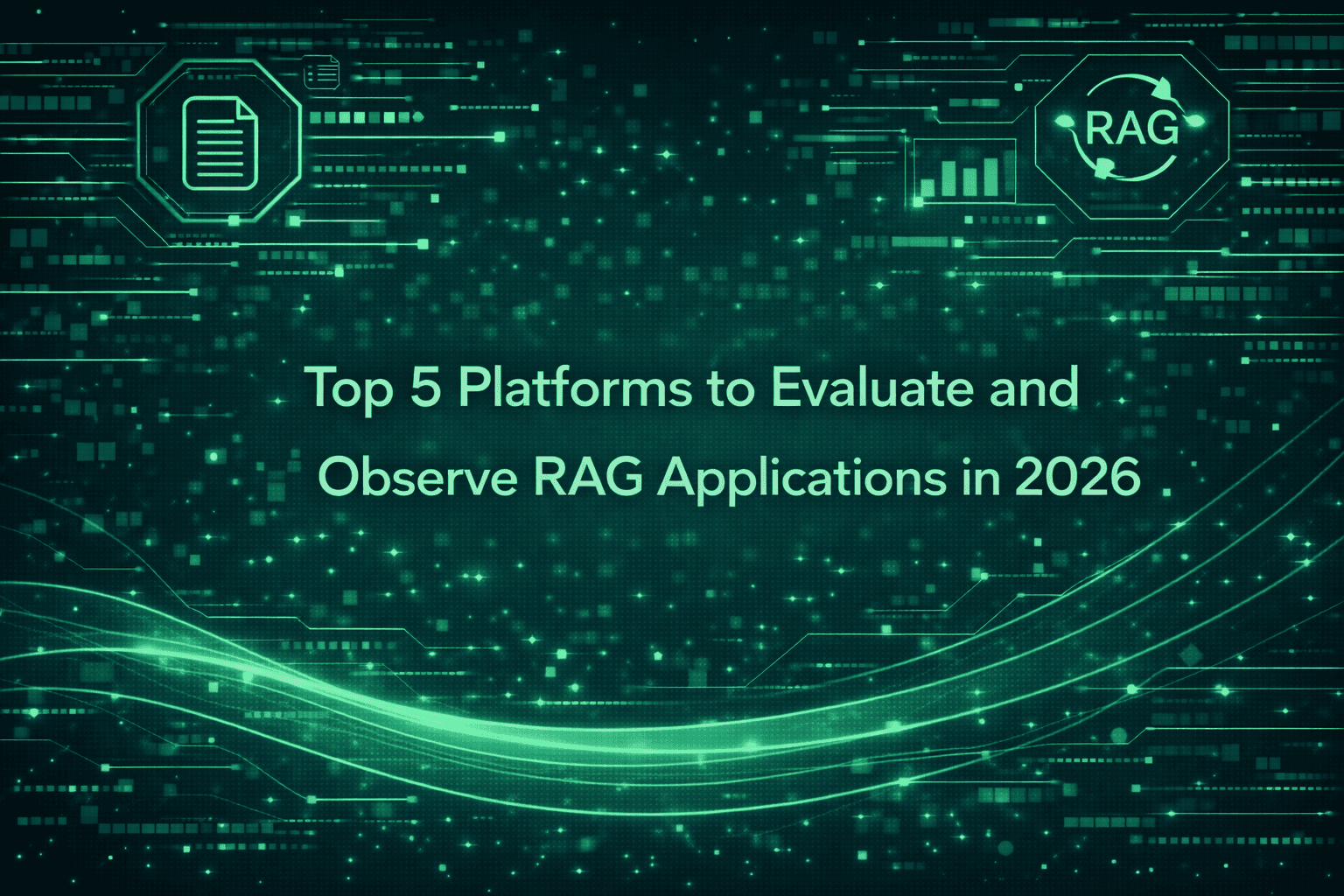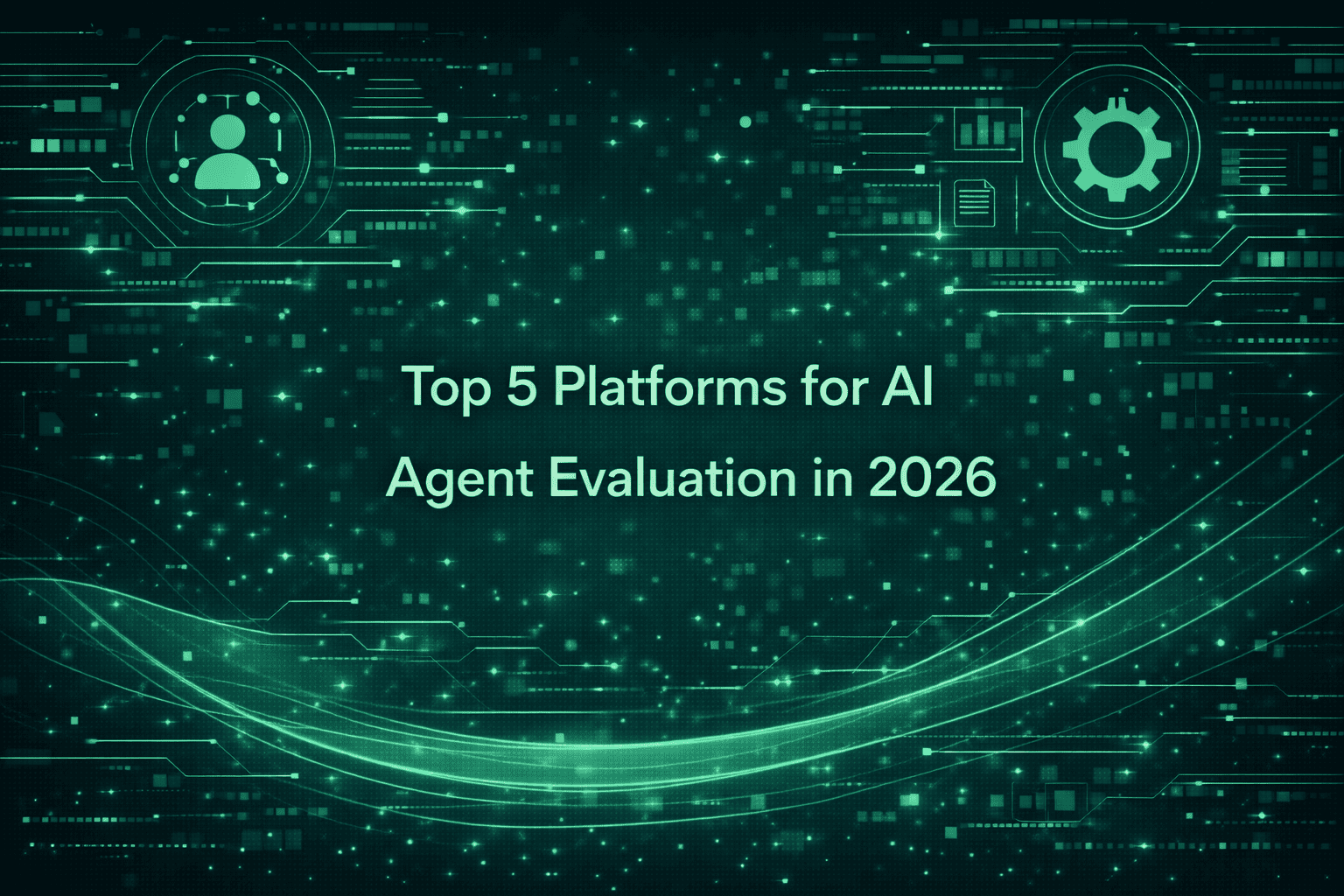What Are AI Evals?

“AI evals” is one of those phrases that gets thrown around in every AI product meeting, but ask ten people what it means and you’ll get ten different answers, half of them vague, the other half suspiciously buzzwordy. Yet, if you’re building, shipping, or scaling anything with LLMs, your ability to evaluate is the difference between a demo that dazzles and a product that actually delivers.
So, what are AI evals, really? Why do they matter? And how do you move from “I think it works” to “I know it works, and here’s the proof”?
Why AI Evals Are the New “Unit Test” for LLM powered applications
In classic software, you write a function, you write a test, and you know if it passes or fails. AI, especially LLMs and agents, don’t play by those rules. Their outputs are probabilistic, context-sensitive, and non-deterministic. The same prompt can yield different answers, and “correctness” is often nuanced and qualitative, not quantitative in nature.
That’s where AI evals come in. They’re not just about catching bugs; they’re about understanding your system’s behavior in real-world interations, surfacing blind spots, and building the confidence to ship AI applications with speed and reliability.
Evals as the Compass, Not the Map
At their core, AI evals are structured, repeatable processes for measuring the quality, reliability, and safety of your AI applications. But here’s the catch: there’s no universal recipe. The right eval for a medical summarizer is wildly different from what you’d use for a creative writing bot or a customer support agent.
Evals are your compass. They help you navigate the messy, shifting landscape of real-world scenarios for your agents, ambiguous requirements, and evolving user needs. They’re not about chasing a single “accuracy” number, they’re about asking, “Is this system doing what we need, for our users, in our context?”
The Anatomy of a Good Eval (And Why Most Teams Get It Wrong)
A robust AI eval isn’t just a metric or a dashboard. It’s a process, one that starts with curiosity and ends with actionable insight.
1. Define What Matters
- What does “good” look like for your use case? Is it factual accuracy, tone, safety, speed, or something else?
- Don’t settle for generic metrics. If your chatbot needs to avoid legal advice, “helpfulness” isn’t enough, you need proper evals capable of determining when your agent is not aligning with the business need or use case.
2. Gather Real, Messy Data
- Benchmarks are a start, but your users will break your system in ways you never imagined.
- Use logs, user feedback, and edge cases. The best evals are grounded in the chaos of production.
- You could simulate multiple scenarios and user persona to surface failure modes using AI.
3. Build Targeted Evaluators
- For some tasks, reference-based checks (comparing to a gold answer) work. For others, you’ll need reference-free rules, human-in-the-loop evals, statistical or programmatic evals and LLM-as-judge to run automated evals on your agent's responses.
- Don’t overcomplicate: start with binary pass/fail checks for critical behaviors, then layer in nuance as needed.
- You could either use off-the-shelf evaluators or build your custom evaluators to fit your business use case and to have thorough evaluation of your ai applications in both pre-production and post-production stages.
4. Analyze, Iterate, Repeat
- Evals aren’t a one-off. As your product evolves, so do your failure modes.
- Use dashboards, and alerts to spot regressions and new failure modes.
5. Share and Act
- Evals are only as valuable as the decisions they inform. Make results visible, actionable, and part of your team’s daily rhythm.
- Collaborate across your Product, Tech and AI teams to fine-tune, optimize and evaluate your LLM powered applications, making sure your team is aligned on how the application is able to address end-user pain points.
The Hidden Pitfalls: Why Evals Are Harder Than They Look
If you’ve ever built an eval and felt like you were chasing your tail, you’re not alone. Here’s why:
- Ambiguity is everywhere: Most AI tasks are open-ended. “Summarize this email” can elicit a myriad of responses from an LLM.
- Requirements shift: What you care about today might change tomorrow as you see more real outputs.
- Metrics can mislead: A high “accuracy” score on a benchmark doesn’t mean your system is robust in production. Accuracy is not able to capture the nuances of a good answer vs the best answer, we need targeted evaluators capable of evaluating agent responses in the business context.
- Human judgment is messy: Even experts disagree on what’s “good” or “bad.” Consistency is a constant battle.
The solution? Embrace iteration. Treat evals as living artifacts, not static checklists. And always, always ground your metrics in real user needs.
How Modern AI Teams Are Doing Evals
Here’s how leading teams are making evals work in practice:
1. Simulation and Scenario Testing
- Instead of just running static tests, simulate real user journeys. For example, Maxim AI’s simulation engine lets you test agents in multi-turn conversations, tool use, and complex workflows simulating hundreds of real-world scenarios across multiple personas.
- This surfaces issues you’d never catch with a single-prompt eval.
2. Continuous Monitoring and Observability
- Evals aren’t just for pre-launch. Use Maxim’s observability tools to track agent behavior, error rates, and user feedback in production.
- Set up alerts and notifications so you catch issues before users do.
3. Custom Metrics and Human-in-the-Loop
- Off-the-shelf metrics are rarely enough. Use Maxim’s custom evaluators to define what matters for your business.
- For subjective tasks, blend automation with expert review. Sometimes, the best judge is still a human.
4. Collaboration and Reporting
- Evals shouldn’t live in a silo. Use dashboards and Maxim's collaborative features to collaborate across teams working on AI applications.
- Make eval results part of your product’s story, not just a technical detail.
The Maxim AI Difference: Evals That Scale With You
Most teams start with homegrown scripts and spreadsheets. But as your AI footprint grows, so does the complexity of your evals. That’s where Maxim AI shines.
- Unified Platform: Design, run, and monitor evals across the entire AI lifecycle, from offline prompt testing to live production monitoring and online evals. See how Maxim does it.
- Simulation-First: Go beyond benchmarks. Test agents in real-world scenarios, not just lab conditions. Learn more.
- Customizable and Extensible: Build evaluators that reflect your unique needs, not just what’s easy to measure. Explore Maxim’s library.
- Seamless Integration: Plug into your existing AI stack, OpenAI, LangChain, and more. See integrations.
- Collaboration Built-In: Collaborate across your product, tech and AI teams. With highly performant SDKs in Python, TS, Java, and Go, your Dev teams get a superior dev-ex and with a super intuitive UI your Product teams can run evals directly from the Maxim platform, either using an API, with the no-code agent builder on Maxim or with any other no-code agent platform. Get started.
Want to see it in action? Book a demo or try Maxim free.
Pro Tips for Evals That Actually Move the Needle
- Start with the user: Your evals should reflect what matters to your users, not just what’s easy to measure.
- Iterate relentlessly: The best evals are living documents. Update them as your product and users evolve.
- Automate, but don’t abdicate: Use automation for scale, but keep humans in the loop for nuance.
- Document everything: Clear criteria, rubrics, and examples make your evals reproducible and trustworthy.
- Celebrate failures: Every bug or weird output is a chance to improve. Evals are your early warning system.
Wrapping Up: Evals Are the Secret Weapon
In the end, AI evals aren’t about chasing a perfect score, they’re about building systems you can trust, improve, and scale.
If you’re serious about AI, make evals a part of your technical KPIs. And if you want a platform that makes it practical, powerful, and even a little bit fun, check out Maxim AI.
Further Reading & Resources:
- Maxim AI Documentation
- Maxim AI Blog
- OpenAI Evals Guide
- Thoughtworks: AI evals
- Product Growth: The One Skill Every AI PM Needs
Ready to level up your AI evals? Dive into Maxim AI, explore the docs, and join a community of builders who measure how their AI is performing in the real-world.


